Golf Cart GPS Systems and Smart Technology: How Smart Technology Transforms Golf Course Operations
Running a golf course in today’s age involves several moving parts, and golf cart GPS systems have emerged as a powerful solution to maintaining efficiency. From keeping pace of play consistent and ensuring smooth on-course flow to effectively managing staff, maintenance, and tee times, managers and operators have to stay on top of everything.
While inefficiencies were inevitable in traditional course models, smart technology like Tagmarshal is helping to turn them into competitive advantages. With the right technology in place, these issues can be addressed quickly and effectively.
In this article, we will discuss some of the common golf course inefficiencies and the various smart technology solutions. We’ll also look at real-world results to give you a clear picture of Tagmarshal’s impact.
Golf Cart GPS Systems: Common Inefficiencies That Drain Time And Money
Running a golf course is complex, and even well-managed facilities have to deal with inefficiencies that can hurt player satisfaction and profitability. These issues are caused by an accumulation of small, everyday challenges like poor visibility, limited data, and reactive decision-making.
Knowing where these inefficiencies originate is the first step to resolving them. In this section, we cover some of the most operational issues that golf courses face. We’ll then look at how golf cart GPS systems solve some of these problems.
Pace of Play Bottlenecks And Flow Disruptions
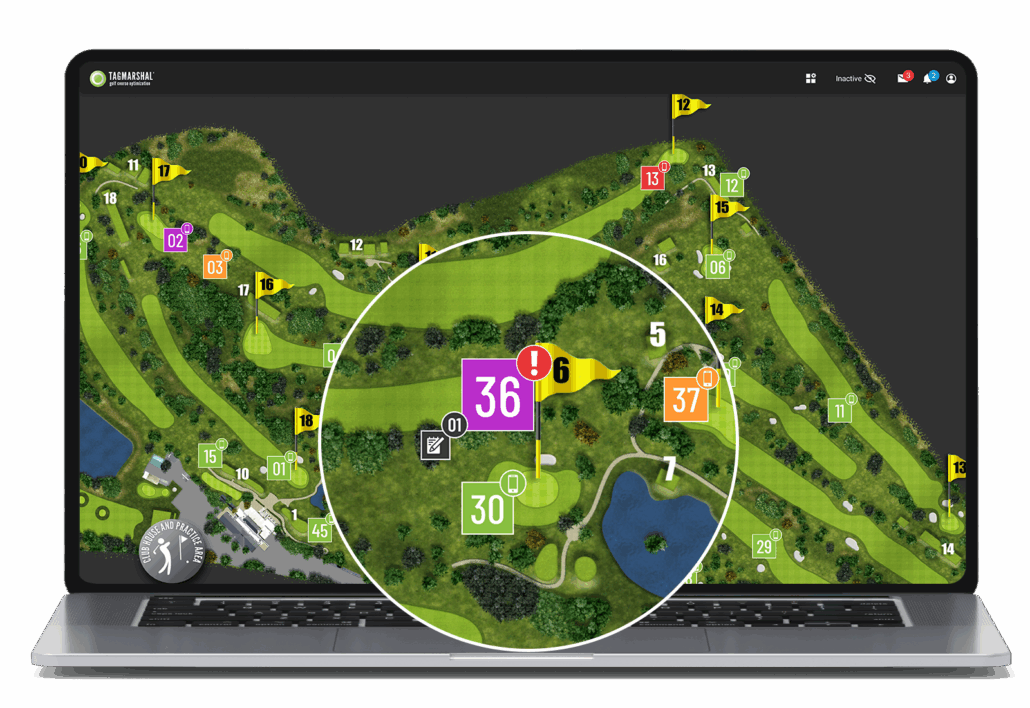
In golf, slow play is one of the most persistent issues that course operators have to deal with. The impact of pace of play bottlenecks is felt across the entire tee sheet, as one delayed group can cause a domino effect. This can lead to longer rounds, congestion on the course, and, worst of all, frustrated players.
We often see pace of play bottlenecks caused by uneven group spacing or inconsistent starting intervals, poorly timed maintenance or starter procedures, late reactions from marshals, and a lack of visibility into real-time play patterns. The more pace of play inefficiencies you need to deal with, the higher the level of frustration for players, which can lead to fewer returning golfers and, ultimately, less revenue.
Without the ability to proactively monitor flow, marshals often find themselves chasing after pace issues, rather than resolving them.
Uninformed Resource Allocation
For golf operators, labor is one of the largest expenses on the course. Uninformed resource allocation can directly impact the bottom line. We often see staff scheduling and deployment decisions based on intuition rather than data, which makes it impossible to effectively allocate resources.
Examples of uninformed resource allocation include marshals patrolling sections of the course that do not require intervention (they’re already flowing smoothly), maintenance teams causing delays by working on holes with heavy traffic, and staff hours being unaligned with the demand patterns seen throughout the day.
Poor scheduling and allocation lead to wasted labor, reduced operational productivity, and higher overtime costs. On top of this, there are often still areas being under-serviced.
Unsold Tee Times
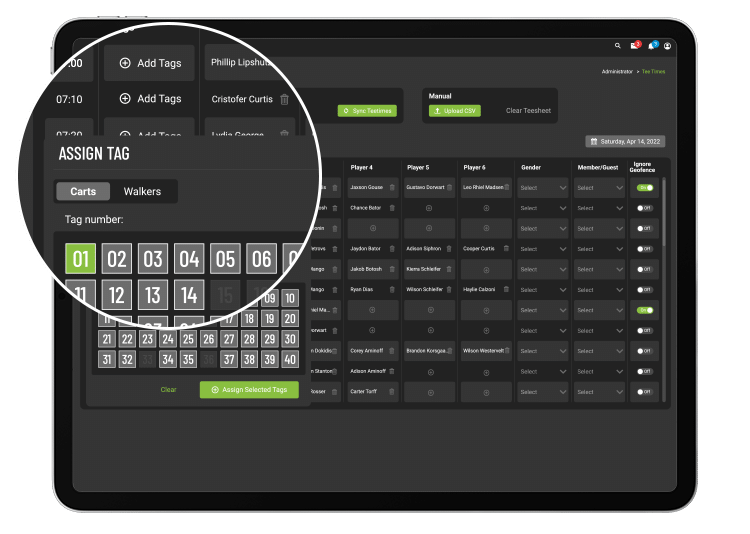
On the course, every minute between tee times represents revenue potential, but many courses still have conservative scheduling buffers or inconsistent pace that stops them from getting the most out of daily rounds.
If pace and flow aren’t optimized, gaps widen between groups, which leaves valuable tee times unsold. Rounds also run over target times, which reduces the total capacity per day, and player congestion during peak periods discourages repeat play. Lost tee slots can hurt profitability, and in combination with dissatisfied players, this can compound, with fewer rounds played and fewer returning customers.
A consistent pace can lead to more open tee times, increasing your yield and improving course utilization without adding any additional stress to staff members or players.
Unnecessary Maintenance Costs
Maintenance is, of course, a major part of running a successful golf course. The conditions of the course have a major impact on the player experience. Players are unlikely to return to a course where they had a less-than-satisfying experience due to the course conditions.
But effective maintenance requires coordination and timing, and without visibility into real-time patterns of play, crews operate on fixed schedules that may end up conflicting with player traffic. This can quickly lead to:
- Rework or interruptions when players reach active maintenance zones.
- Overusing cart paths or fairway areas, leading to additional wear.
- Added fuel and equipment costs because of inefficient routing.
- Turf damage from unmanaged cart access or geofencing blind spots.
Not only do these issues increase maintenance expenses, but they also reduce the overall quality of your course presentation. The goal should be to align maintenance activity with actual course flow, and smart technology and golf cart GPS systems can help you do this.
Manual Tasks And Human Error
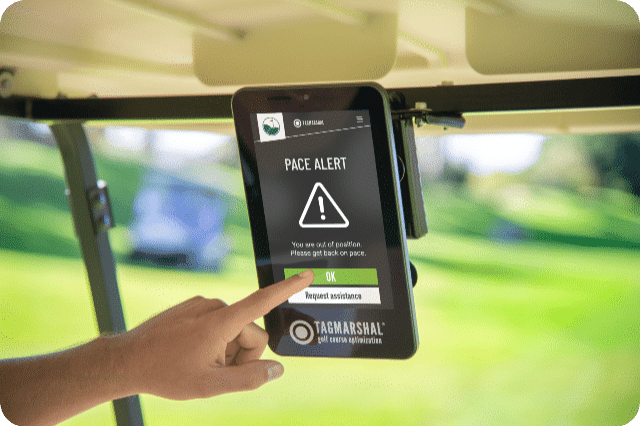
In today’s age, courses that still rely on pen and paper, spreadsheets, ad-hoc marshal logs, and other manual systems are bound to fall behind competitors. An entirely manual approach to labor leads to a fragmented system that is subject to human error.
The consequences of this include missed pace issues because of delayed communication, inconsistent data collection between shifts, difficulty tracking and reporting on performance metrics, and emotion-driven decision-making rather than data-driven decision-making.
Without unified, real-time data, courses are unable to effectively identify patterns, make confident adjustments, or measure the true impact of operational changes. Luckily, golf cart GPS systems serve as the perfect solution to this problem.
Golf Cart GPS Systems: How Tagmarshal’s Tech Improves Course Efficiency
We’ll now look at some of the ways in which technology is helping to resolve these problems and transform course operations.
Targeted Pace Management
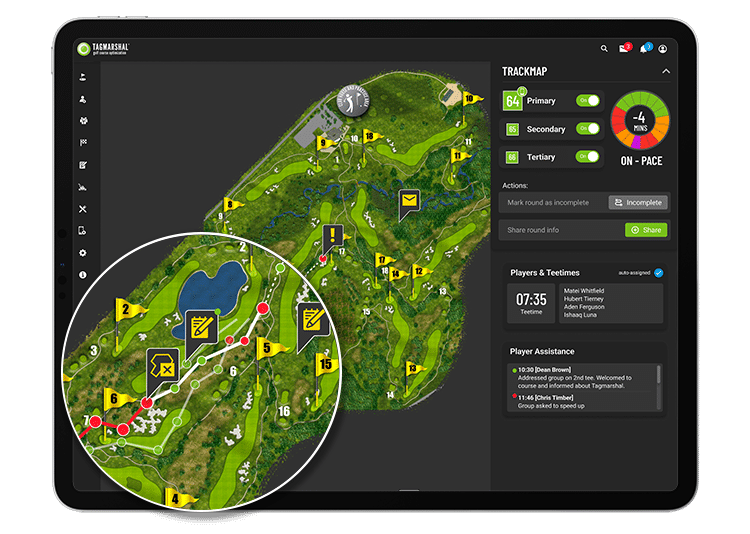
With Tagmarshal’s GPS systems, you no longer have to send marshals to aimlessly patrol the course in search of playing groups who have fallen out of position. Instead, this smart technology can be used to get real-time updates on where each group is on the course, helping to quickly identify who is out of position and causing delays.
This targeted intervention saves time and improves course flow as a whole. It also reduces the number of marshals needed, so courses may end up saving on labor costs, too. The data being offered on these systems allows for fact-based, neutral discussions that help develop realistic pace of play policies that can be communicated to players.
We recommend giving marshals daily or weekly goals for positive on-course interactions. As time passes, players will start to see them as player assistants, tasked with improving the experience as a whole, rather than just intervening to speed things up.
Increased Labor Efficiency And Workflow Optimization
While labor is a major expense for operators, smart technology has enabled one person to fulfill multiple roles, leading to increased labor efficiency. For example, a team member can monitor the course’s pace of play from the clubhouse while performing other duties, as they’ll only have to step in to assist when a potential issue arises. Operators can therefore save on labor hours and salary costs, freeing up resources that can be directed toward delivering an unmatched player experience, setting your course apart from your competitors.
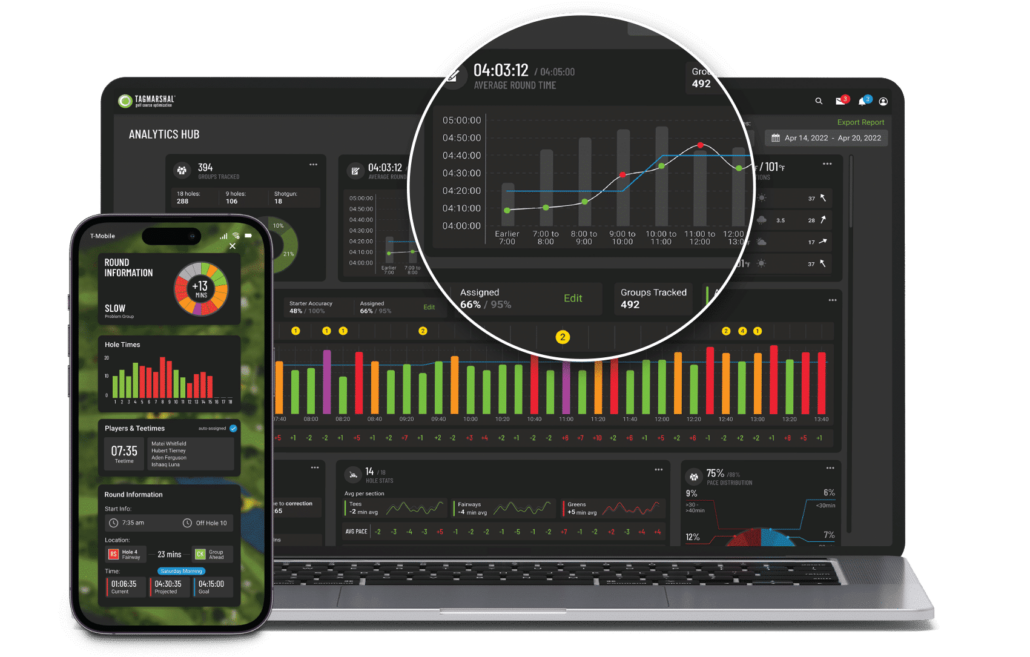
A golf course is an interconnected system, but in many facilities, data is fragmented across multiple platforms like tee sheet software, POS systems, maintenance schedules, spreadsheets, and more. This type of disconnect can slow down decision-making and increase the administrative workload. Tagmarshal allows you to connect operational tools into a unified, data-driven platform. This leads to dynamic resource allocation, faster decision-making, improved accountability, and reduced duplication of effort.
We recommend using Tagmarshal’s Live Map to get a real-time, bird’s-eye view of where each group is on the course. Making this visible on TV screens in the pro shop or clubhouse will encourage players to self-manage pace, which further increases resource optimization.
Automated Tasks And Smart Alerts
Automating certain tasks is a must for getting the most out of your day-to-day operations. Golf cart GPS systems allow you to automate previously time-consuming tasks. By embracing Tagmarshal’s industry-leading golf cart tracking technology, you no longer have to send staff running around to perform pen-and-paper calculations on each group’s schedule, as this data is now compiled automatically.
With that, you get access to far more accurate data that is immediately accessible. The valuable information within this data may also provide insight into where efficiencies can be uncovered in your course, such as gap time interval management and hole setups. Other labor-intensive tasks, such as the protection of sensitive areas or the assignment of tee sheets, can also be automated with Tagmarshal’s system.
Automation also streamlines communication to players. The in-cart GPS screens display automated pace reminders and friendly nudges to speed up, as well as updates on course conditions without the need for manual intervention. This can help maintain a positive guest experience by removing confrontation and keeping pace messages consistent.
On top of that, smart alerts and geofencing technology improve. The golf cart GPS system will send automatic on-screen warnings to players entering restricted areas such as bunkers, greens, or maintenance zones. This reduces the damage without the need for manual enforcement.
We recommend investing the time upfront to create automation processes where possible. In the long run, this will provide benefits in both labor and cost savings, while providing you with an increased amount of valuable data that can be used to improve the player experience and course operations as a whole.
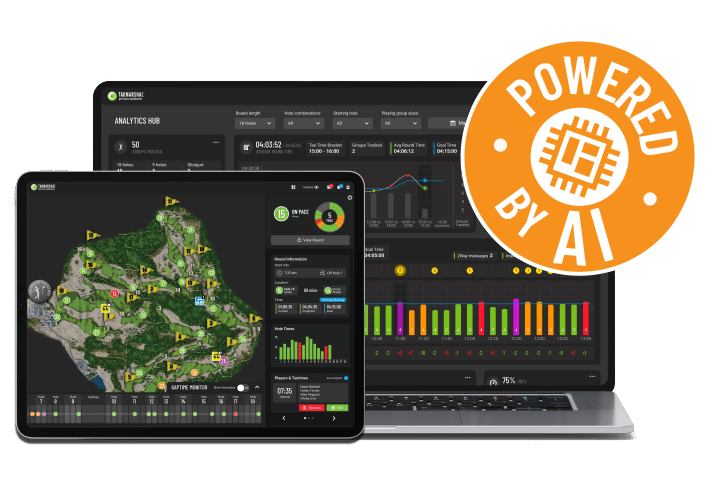
Data Analytics And Predictive Intelligence
As the leader in golf cart tracking and smart golf technology, our enhanced data visualization and analytics features make it easy for users to customize the experience and highlight the exact data needed to make smart operational changes. Our AI and machine learning features have been used at renowned courses like Bandon Dunes, The Country Club at Castle Pines, Kiawah, The Medalist, and Erin Hills.
This industry-first, AI technology is based on data from over 75 million tracked rounds of golf, now providing operators with all-new standards of insight, offering unprecedented prediction and forecast abilities. Our powerful algorithms process and analyze golf cart tracking data, using more than 10 dynamically calculated factors and drawing on historical trends to predict which trouble might occur before issues manifest.
We recommend using the predictive intelligence features to identify and resolve issues proactively, and basing decisions on real-time data rather than intuition.
Golf Cart GPS Systems: Improving Pace And Flow
We can see how technology can be used to provide courses with a range of benefits. In this section, we’ll briefly look at a few focused strategies to further improve pace and flow.
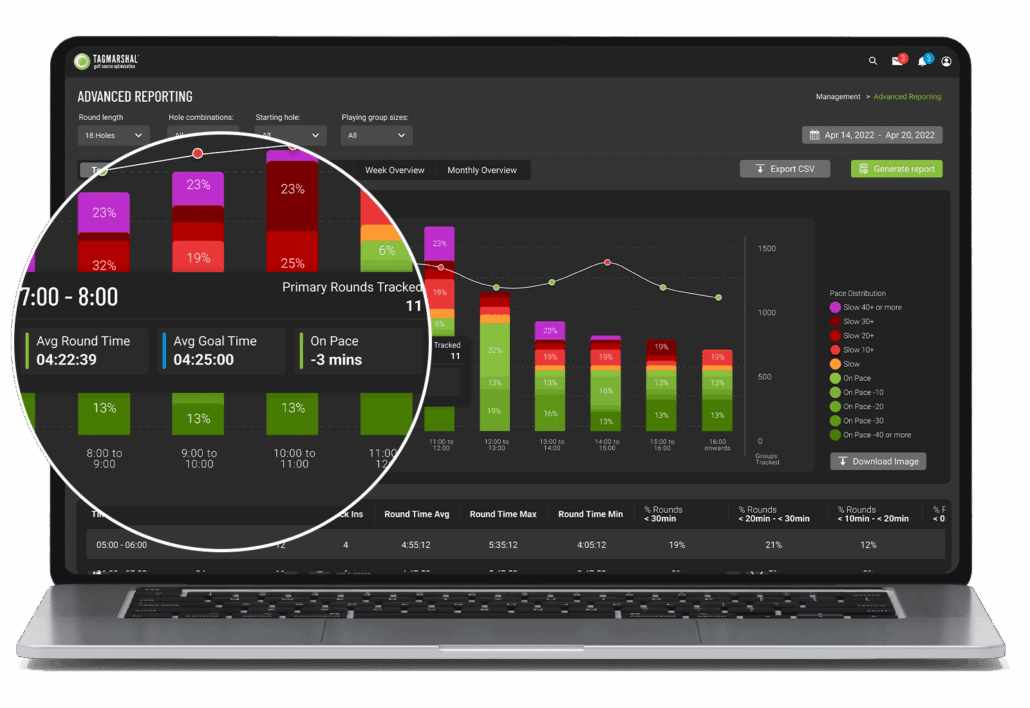
- Set And Communicate Realistic Round Goals: Set clear, achievable target round times that align with course design, customer profile, and historical data. Golfers who understand expected pace benchmarks are more likely to self-manage, reducing the need for intervention. Tagmarshal’s GPS allows you to display pace targets and live maps directly on cart screens to give players clear visibility.
- Adaptive Gap And Interval Management: While traditional tee sheets use static intervals that fail to account for changing conditions, data-driven management allows you to adjust tee spacing dynamically, optimizing flow and maximizing daily capacity.
- Proactive Marshal Deployment: While some courses rely on marshals to patrol reactively, this can be inefficient and slow. Proactive deployment ensures staff intervene early and strategically. With Tagmarshal’s live pace data, management can assign marshals to specific areas where slowdowns are forming.
- Encourage Ready Golf: Player behavior is still a massive influence on pace of play. Courses that encourage “ready golf” and other quick play habits through on-course messaging are likely to see improvements in round times. Tagmarshal’s system can deliver automated pace notifications and friendly reminders to players to reinforce practices like “ready golf”.
Golf Cart GPS Systems: Willow Springs Case Study
Willow Springs Golf Course is an 18-hole links-style course that plays to a par of 62, with a unique blend of 10 par 3s and 8 par 4s. The management team aimed to improve pace of play and overall flow to increase rounds, boost revenue, and maintain a higher quality experience for guests.
As such, Willow Springs outfitted carts with Tagmarshal’s 2Way GPS screens and used the Live Map backend system for proactive pace management. The results are proof of how powerful Tagmarshal’s system can be.
The course saw significant cost savings, smoother flow, and the ability to add new tee times thanks to more consistent round times. The improved player experience allowed management to increase green fees by $5 per round and introduce dynamic pricing, which unlocked even more revenue gains. With Tagmarshal, Willow Springs achieved record-breaking months and was on track to earn over $500K more than the previous season, showing a 10x return on investment in the first year of using Tagmarshal’s golf cart GPS systems.
Final Thoughts On How Technology Improves Course Operations
The modern age of golf demands efficiency. Fortunately, Tagmarshal’s course optimization and data-driven technology give courses the tools they need to transform operations. From significantly improving labor efficiency to enhancing the player experience as a whole, the benefits of Tagmarshal’s system are clear.
Get in touch today, and discover how Tagmarshal can help your course boost efficiency, elevate the player experience, and grow revenue!
OPTIMIZE YOUR ON-COURSE OPERATIONS TODAY
Watch Demo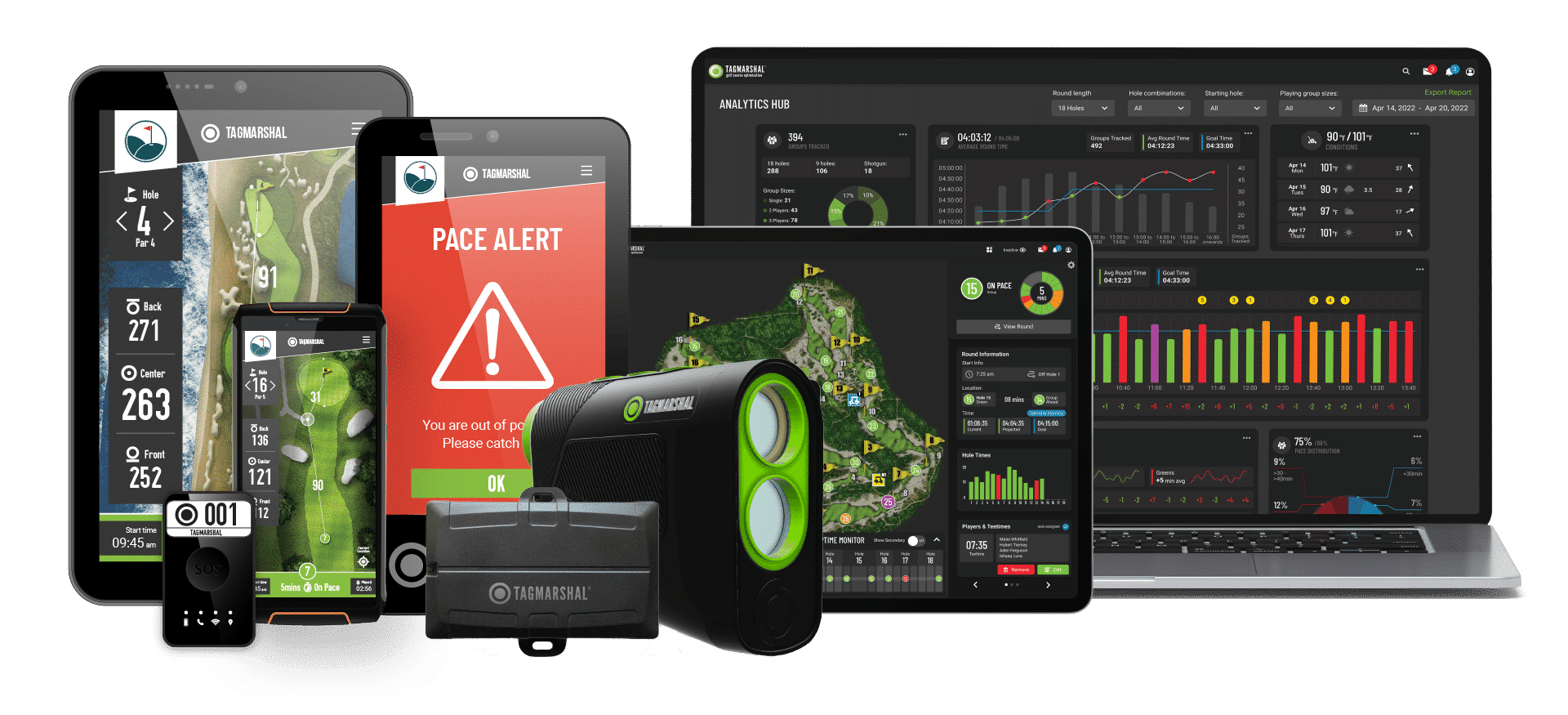
ABOUT TAGMARSHAL
Tagmarshal, the market leader in on-course optimization technology, provides courses with full, real-time operational oversight and reporting, giving golf operators the tools to manage pace and flow of play effectively, resulting in enhanced player experiences, increased efficiency through automation, and additional revenue generation.
Tagmarshal’s technology has collected over 100 billion data points from more than 95 million tracked and improved rounds of golf and has relationships with in excess of 900 partners, including Hazeltine, Whistling Straits, Baltusrol, Fieldstone, Bandon Dunes, The Old Course at St Andrews Links, Serenoa and Erin Hills.
Tagmarshal partners with several golf management groups, private, daily fee, public and resort courses, including 50 of the Top 100 courses, as well as many $40-$60 green fee courses, which are seeing excellent results using the system.
 WATCH DEMO
WATCH DEMO